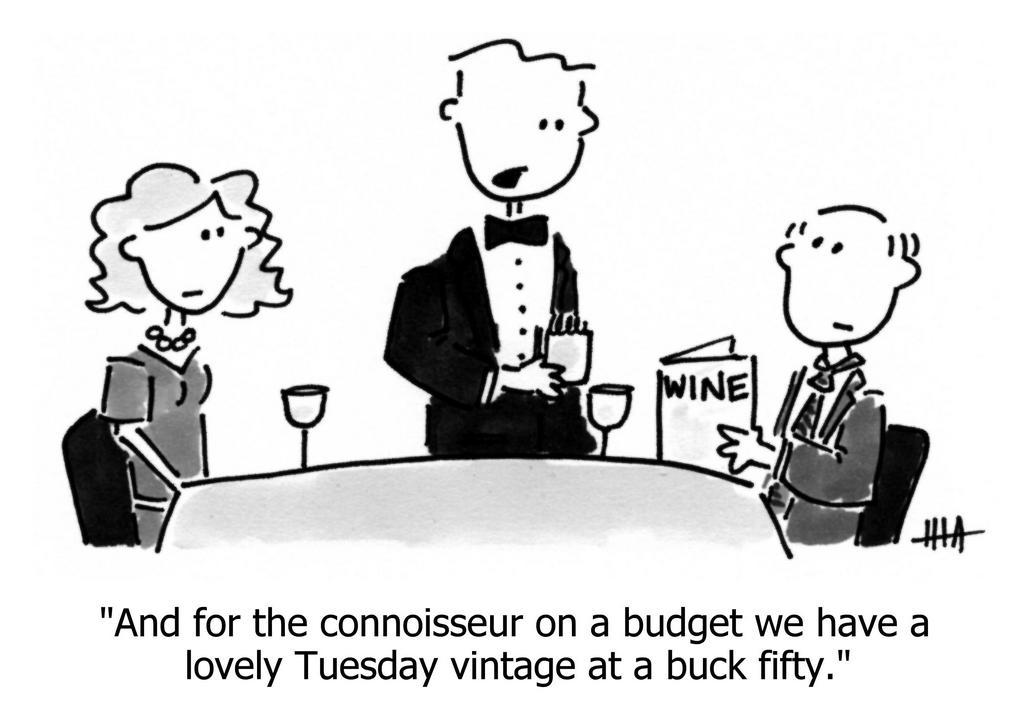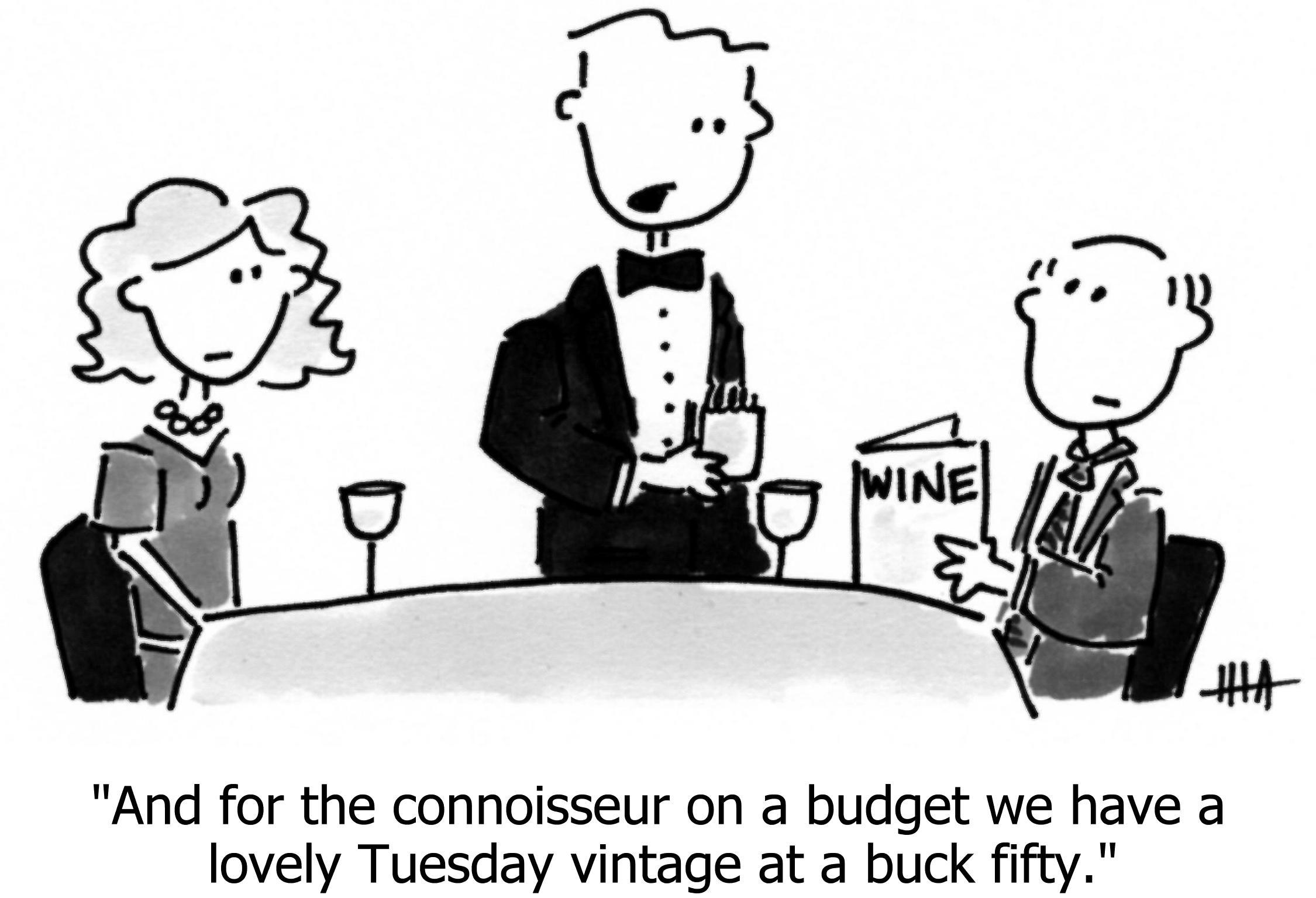More or less
There are three viable strategies in the interplay between value and price:
- More for more
- Get the best, with a price to match.
Luxury. Advantage. - More for less
- Everything you actually need, at a reasonable price.
High-ROI. Practical. - Less for less
- It’s not much, but it’s incredibly affordable.
A steal. Accessible.
You see this pattern across all industries, in both consumer and business markets.

More for more
Cardigan by Miu Miu for €2,150
In clothing, for example, a cashmere sweater embodies More for more—expensive, but deliciously soft (enjoyment) and warm (functional). A high-end brand has a function beyond high-quality materials: Status is bestowed upon the owner, due to it being overpriced beyond its quality. Buyers are not budget-constrained, which enables high prices and correspondingly high profit margins, but customers also have their pick of options, where every other product on the planet is a competitor. The customer is in control. Hence the importance of being “the best” according to some subset of the market.

More for less
Sweater by L.L. Bean for €92
More for less describes the practical decision-making that governs most purchases: Highly functional articles that will last for years, at one-fifth or even one-tenth the price of the same luxury item. Most people have a budget and therefore are seeking “The best that I can afford.” Thus price is the primary constraint, inside which they prioritize features according to personal preference; they can’t have everything, but they can prioritize everything. The product’s goal is not to be the best along every dimension, but rather to offer a set of trade-offs that enough customers prefer over other sets.

Less for Less
Hoodie by Tamu for €7
Fast-fashion vendors provide Less for less, where you’ll find the article disintegrated in the washing machine by the end of the season, but hey, it was cheaper than lunch. Consumers aren’t choosing between trade-offs, but rather between having a sweater, or having no sweater at all. All negatives are accepted, as there is no alternative. The vendor enjoys a massive market, but rock-bottom prices mandate extreme cost-efficiency, requiring almost non-existent marketing and sales costs, and even in the best case yields barely any profit even at scale. A competitor with a better cost structure can decimate the business. Don’t worry about it.
All three approaches are valid and, like all strategies, each drags along a set of consequences, some of which you despise, others you love. You must pick one approach, and accept its batch of consequences. If you don’t incorporate those consequences into the rest of your strategy, you’ll have a confusing market message, a Frankenstein product, and the wrong pricing model.
More for more (“The best”)
Building “the best” is wonderful for both profit and enjoyment of life. It feels good to have pride in your craft, to have customers who love what you do and agree with your superlative self-assessment. “The best” commands a high price, which makes profit easier, even while self-funding further investment. This is a beautiful place to be, but it comes with consequences.
“The best” is not the average of a subset of things that already exist. The best is an outlier. The best is special. The best is different. Your ideas need to be substantially different from what’s already available, or it’s definitionally not true that you’re the best.
So, the first question is: The best at what? It could be anything, but it has to be specific, and customers have to agree it’s worth the higher price tag. It could be the best design—the simplest, the most pleasant to use, the most beautiful. It could be quality—the peace of mind and enjoyment of a product always “just works”. It could be a superior workflow, could be that it integrates with all the tools the customer uses, it could be personal tech support, and more. This article on “Willingness to pay” lists more ways of being “the best”.

Coupled with “best at what” is “best for whom?” There are billions of people on the planet who absolutely do not agree what “best” means in clothes, software, food, or articles about pricing strategy. This is where founders get fouled up; they think that just because they love it, and they “built it for myself” and therefore “I am the customer,” and therefore other people will also to pay to solve that problem, in that way. They rarely do. The fallacies with that assumption (and some truths), are detailed here. Instead, use your initial spark of insight as the starting point, your motivation, knowing that half of it is indeed correct but half isn’t, and so you go find potential customers to interview, and use a structured process to fix your hypotheses to morph your definition of “best” into alignment with what some specific ideal customer.
Customers in this category care about something even more than they care about price. What kinds of things are like that? In business, an example is so-called “mission-critical” things, i.e. a failure or low quality causes outsized damage in internal cost, or far worse, damage to their reputation, in the worst case causing customers to leave.1 Something that is an urgent, top priority for them right now, whether due to emergency or strategic mandate.2 In the consumer world, it could be what Google calls a “toothbrush product”—something vital that is used at least twice a day, or ideally all day,3 or tied to personal identity.4
1 Our company WP Engine is an example, because we run websites like eCommerce (all of the customers’ revenue) or media (merely being slow means they lose traffic, which means they lose ad revenue) or corporate home pages (downtime costs lost leads and lower reputation). This can also be CYA, i.e. “no one ever got fired for buying ______”.
2 See this article for many examples of how this arises, and how to define your target customer and product to match.
3 Examples: to-do apps for busy people, email for people who spend more than an hour per day there, calendar apps for people whose calendars look like they only barely lost a game of Tetris, note-taking apps for people with 1000s of notes
4 Like luxury brands, where being “far too expensive” is the point, like a ram with ridiculous horns.
Being “the best” isn’t just about the product or the customer-fit; all other decisions must also be aligned with that positioning. Your marketing will focus on excellence and exclusivity rather than affordability. Your team will likely be smaller with higher-caliber individuals—passionate artisans who take pride in creating excellence and celebrate perfectionism. When hiring, you’ll focus on finding the top 1% of talent, often paying premium salaries. Your customer support response-time isn’t measured in hours but in seconds, often with white-glove, personalized service and dedicated account representatives. Your product development cycles may be slower, emphasizing perfection before launch, developing features without cutting corners regardless of cost. Because the number of customers in the market is small and limited, market-share matters, and upgrading existing customers is vital for growth at scale.5
5 Many public enterprise software companies get the majority of their revenue growth from up-selling existing customers, rather than adding new ones.
Fortunately, the high price tag means you can invest in these things. And if you pull it off, it’s the best for yourself because you’re fulfilled when you’re exercising your best qualities and you’re validated when others agree on Twitter and say it to your face. You can recruit great employees, because who doesn’t want to work at a company whose customers actually love them?
Most products are not “the best”. But for those who can deliver it, it creates a virtuous cycle of excellence, satisfaction, and profitability that’s hard to beat.
More for less (“High ROI”)
Efficiency is beautiful. “More for less” means receiving outsized value for a given cost. It is the right value proposition for most things in life, especially in business where you need to get a job done as cheaply as possible, but not cheaper.

The global apparel industry exemplifies the claim that this is the most popular category. The “more for less” category generates $1,200B of the industry’s total $1,600B annual revenue, with luxury at $250B and fast-fashion at $150B. With profit margins of 5%-15%,6 they are unsurprisingly more profitable than fast-fashion (under 5%)7 and less than luxury (20%-30%).8 “More for less” software companies can have much better profit margins than apparel; coupled with reasonable prices and addressing the largest market segment, this is a great business model.
6 L.L. Bean, makers of the sweater above, is private and doesn’t report profit, so this range is based on their 10% annual spend on bonuses and give-back activity and data from other retailers.
7 The outlier-most-profitable fast-fashion brand stands at 9%, but almost all are under 5%.
8 For example Prada, which makes the Miu Miu sweater above, generates 23% net profit.
Which types of product benefit from high-efficiency, but doesn’t require “the best?” Perhaps almost anything. Back-end systems that operate the company but are invisible to customer are a good start, because no competitive advantage is conveyed to the company for getting “the best.” Even more ideally, areas where downtime isn’t terribly disruptive to their real-time operations; a reporting system can be down for an hour without hurting their business, but a customer support tool cannot. Or an area where it’s OK if not every desired feature is present, again like reporting software where the lack of exactly the right chart-type is not a deal-breaker, and won’t prevent them from seeing the data. Even better when the product just needs to “tick a box” to “say that we have it,” because then requirements won’t be stringent. It might sound negative that your product isn’t “critical to their success”, but being non-real-time, non-essential, also means you have far more leniency in quality or lack of features.
This leniency in requirements is also why you will make 100x more sales than you expect, even though you still target the “perfect” ideal customer with marketing and product features. For your ideal customer, you are in fact “the best,” and they cannot believe they’re getting the “More for more” product for the “More for less” price. That attitude defines them as the ideal customer; if you can’t win them over from your home page, you’re not doing your job.
But, for every one of those, there’s a hundred others where you’re the right choice. You have most of what they want, you don’t have any deal-breakers, and the price is right, so you’ve made the sale. So, you gain the power of specificity, clarity, and emotional connection from talking to your ideal customer, while winning all the “More for less” customers anyway. This article on ICPs explains this dynamic in detail, with examples.
Although the main value here is economy, “save money” is weak positioning. Position by showing how much value you’re generating rather than how much money you’re saving as described in this article on positioning for value. Because, even if this is your pricing strategy, that doesn’t mean it’s your marketing material. Your marketing position still needs to be as strong as possible, emphasizing that it really is more for less.
As with the other pricing strategies, the rest of your decisions must be aligned. Marketing will make the customer feel like this is the “smart choice,” neither wasting money on useless branding nor falling prey to the mistake of “If you think this is expensive, wait until you see how expensive ‘cheap’ is.” Marketing must make the trade-offs clear, not try to claim it’s the best for everyone, which quietly alienates everyone; comparison charts shouldn’t be a solid column of green checkmarks, but rather elucidate where you are strong, and where you are not the right solution. Product features must not be too difficult to maintain, as the price tag doesn’t allow for special exceptions or for brittle integrations that only 5% of the customers use. Rather, build only those features used by at least 50% of customers, or where at least 15% of customers buy you specifically for that reason. Hire team members who excel at identifying and eliminating waste without sacrificing core value. Your whole business must reflect the “More for less” mentality; your internal costs and decisions match your external promises.
Pundits have long eschewed the “More for less” strategy as a poor compromise between being either “the best” or “the cheapest.” As Michael Porter famously wrote in Competitive Strategy (1980), there are only three strategies: (a) Differentiated Best; (b) Low-Cost Leader; (c) Niche Leader. Later thinkers pointed out that (a) and (c) are the same, differing only in market-scope. This leaves the Porter model with what I am calling “More for more” and “Less for less.”
However, the customers have spoken, and in most consumer and business industries, it is in fact the “More for less” category that wins most of the customers and most of the revenue and most of the profits. We must not fall prey to the incorrect attitude that this is “a balance” between value and cost; we should instead recognize that “More for less” is a third, independent strategy, and leverage its strengths to the fullest.
Less for less (“Incredible deal”)
They say “never compete on price”, but as the linked article demonstrates, that statement is incorrect. There are many wildly successful companies, from solo bootstrappers to some of the largest and most-profitable companies in the world,9 who became successful due to absolute rock-bottom prices, even though those products come with severe trade-offs that many consumers would not accept. Sometimes, “cheapest” is “best”.
It may seem like “less for less” couldn’t be a good strategy, because neither employees nor consumers ought to be happy with “less,” and low prices means low revenue, which in turns means little money for marketing, sales, development, support, product, design, or fun company-culture stuff around the office.10 All that is true, and are among the consequences we accept when we adopt this strategy, but the hundreds of billions of dollars of profit (to say nothing of revenue) generated by the many “less for less” successes prove that these trade-offs are sometimes the right ones.
9 Examples: Amazon, Walmart, Vanguard, Costco, Dollar General, IKEA, Southwest Airlines, H&M, Zara, Xiaomi, ALDI
10 Or whatever virtual-office-substitute we’re pretending has the same effect as human beings being beings together.
When something is surprisingly cheap, customers are not surprised that they have to compromise on most dimensions, such as quality, design, convenience, features, service, appearance, or longevity. Sure, it’s missing some obvious features. Sure, it doesn’t integrate with Enterprise systems. Sure, customer service is going to be a set of knowledge-base articles. Sure, it sometimes crashes. What did you expect for $5 per month?
There are billions of people who will buy $5 clothes that barely survive the season. If I pay $2/month for web hosting and I get email and a website, it’s okay if the email gets some spam and the website is not always fast or even always working. And I don’t expect the clothing retailer to have customer service or accept returns, and I don’t expect tech support from that web host to know anything beyond helping me reset my password.

The fundamental reason a customer will accept a wide range of trade-offs is that the alternative is to not have the product at all. That is, the choice is between having any hoodie versus having no hoodie. The product is “binary” in this sense—having versus not-having—thanks to an accessible price tag. One does not quibble over “features” or “quality” or “service” when the alternative is “nothing”.
This is at once empowering—supplying goods to people who otherwise had no access—and depressing—that so many people cannot afford the comforts invented through modern ingenuity. And so we generate the worst versions of those items for most of the world to “enjoy.” Which viewpoint is correct? The answer can often be found in the mission and purpose behind the company—the real one, not the one written by the marketing department on the “About Us” page—where the fundamental driver of the company is either one of empowerment and impact, or one that exploits desperation. Regardless, the company should extol the positive aspects in branding and positioning: Emphasizing democratization, participation, simplicity, affordability, and accessibility.
The hardest part of executing this strategy is being profitable, since there’s so little revenue to be profitable with. The costs have to be extraordinarily, unconventionally low. Some of that can come with scale, either directly (e.g. bulk-purchases from suppliers) or structurally (e.g. tech support per customer is lower at 100,000 customers than at 100, simply because most of them don’t have a question in any given month). Still, it takes a lot of $2/mo customers before you can afford to hire even a single tech support person. Or if winning a customer means winning $2/mo and maybe $50 across the entire lifetime of that customer, you can’t afford to pay very much to acquire that customer, whether that’s in direct advertising spend, or sharing revenue with an influencer,11 or indirect so-called “organic” marketing,12 and you certainly can’t have a sales team. You must rely on word-of-mouth and reviews from customers; you’ll need to encourage it.
11 Affiliates are paid only after you are paid, which means this is an affordable form of marketing from the start.
12 While harder to get customers at first, when pages aren’t ranked in Google and social media accounts aren’t followed by anyone, those assets do scale over time.
Given that revenue will significantly lag costs, is it mandatory that such a company raise money? The company will certainly consume cash for a while, whether that’s in the form of someone’s savings, friends-and-family, a loan, or indeed raising money. Annual billing can help quite a bit. This is why pundits (including me) are always telling bootstrappers to “raise their prices” or, since you now know that prices are coupled with every other strategic decision in the company: “switch from a ‘less for less’ strategy to either ‘more for less’ or ‘more for more.’” If you don’t want to raise money, don’t build a business that burns money on purpose.
However, it’s not true that such business need to raise an exorbitant amount of money. In fact, in the same article above, every one of the four case studies (which each grew to multiple-billion dollars in revenue) raised only a small amount of money. Those stories are detailed in the article. When the strategic decisions are fully aligned to a low-cost operation, you only need enough starter cash to get going. This is where VC-funded companies often get it wrong; they assume “we can work the costs out later,” but when “later” comes, they realize their processes, technology, and culture has solidified around whatever worked for acquiring customers, and change is either impossible or dramatically painful, like layoffs, rewriting the code that works, and trying to force unnatural marketing and sales motions. There are also examples of bootstrapped companies using this strategy who never raised money; they typically have some extreme cost advantage, such as being located in a country with extremely low costs, yet selling to the United States and Europe. Being physically located in a low-cost zone is a competitive advantage that companies in The West cannot match.
As usual, what doesn’t work is having a low price without the rest of the strategic decisions. This constantly happens with inexperienced founders who think: “My product sucks, so I’m not comfortable charging a lot.”
That’s not a good reason, and you shouldn’t just build crappy product. Instead, the question should be: How do I build a simple yet lovable product that some specific ideal customer would pay 10x more than I’m currently charging, even though it doesn’t have a lot of features, and sometimes doesn’t even work? That’s exactly what I did with WP Engine.
While the hardest intrinsic challenge is to be profitable, the hardest external challenge is that a competitor can beat you with lower prices alone. And this is all too easy, because there’s so many reasons why a competitor might win:
- Newer technology means they can build it for less.
- Different location or other cost-structure.
- Larger company uses a “loss-leader” to bury you, since they don’t need it to make money at all.13
The antidote is to constantly increase your cost-efficiency, and possibly proactively lower prices. This is what Amazon did in retail and later did in the cloud.14
13 A particularly ironic example: Microsoft killed Netscape by putting over a thousand developers on Internet Explorer and releasing it for free; more than a decade later, Google killed Explorer by putting over a thousand developers on Chrome and releasing it for free.
14 Amazon knew from their “your margin is my opportunity” strategy in retail, they should proactively reduce prices as their cloud operations scaled, to prevent people from looking for alternatives. Later, when Microsoft and Google were established as the only two serious competitors, they all stopped lowering prices simultaneously. Surely a coincidence?
“Less for less” is brutal, because of relentless competition and having no extra money to work with. But, it means accessing the largest number of potential customers, and in the best case, you are truly enriching the world by bringing goods and services to people who otherwise could not afford to enjoy them.
All three pricing strategies are valid—each boasts wildly successful companies of all sizes, in every country.
Ideally, one of these strategies jumps out at you as the smartest one, or at least the one you’d be the most excited and proud to implement. Another might jump out as being dumb, or at least too difficult, not worth the consequences, not where you want to spend your precious, irreplaceable time on this Earth.
Listen to your gut. Because all are, in fact, smart strategies, you should pick the one that best matches your personal strengths and proclivities, because that’s the one you will execute the best while being most fulfilled. This is another choice that increases your chance of success.
The only wrong choice is to not choose at all, and thus be confusing to customers and misaligned with the rest of your strategy. Then you will make internally-inconsistent choices, working against yourself, and your customers won’t know how to think about your product, which means they won’t be comfortable buying it.
And then your product is the right choice for no one.
https://longform.asmartbear.com/more-or-less/
© 2007-2025 Jason Cohen
 @asmartbear
@asmartbear ePub (Kindle)
ePub (Kindle)
 Printable PDF
Printable PDF















